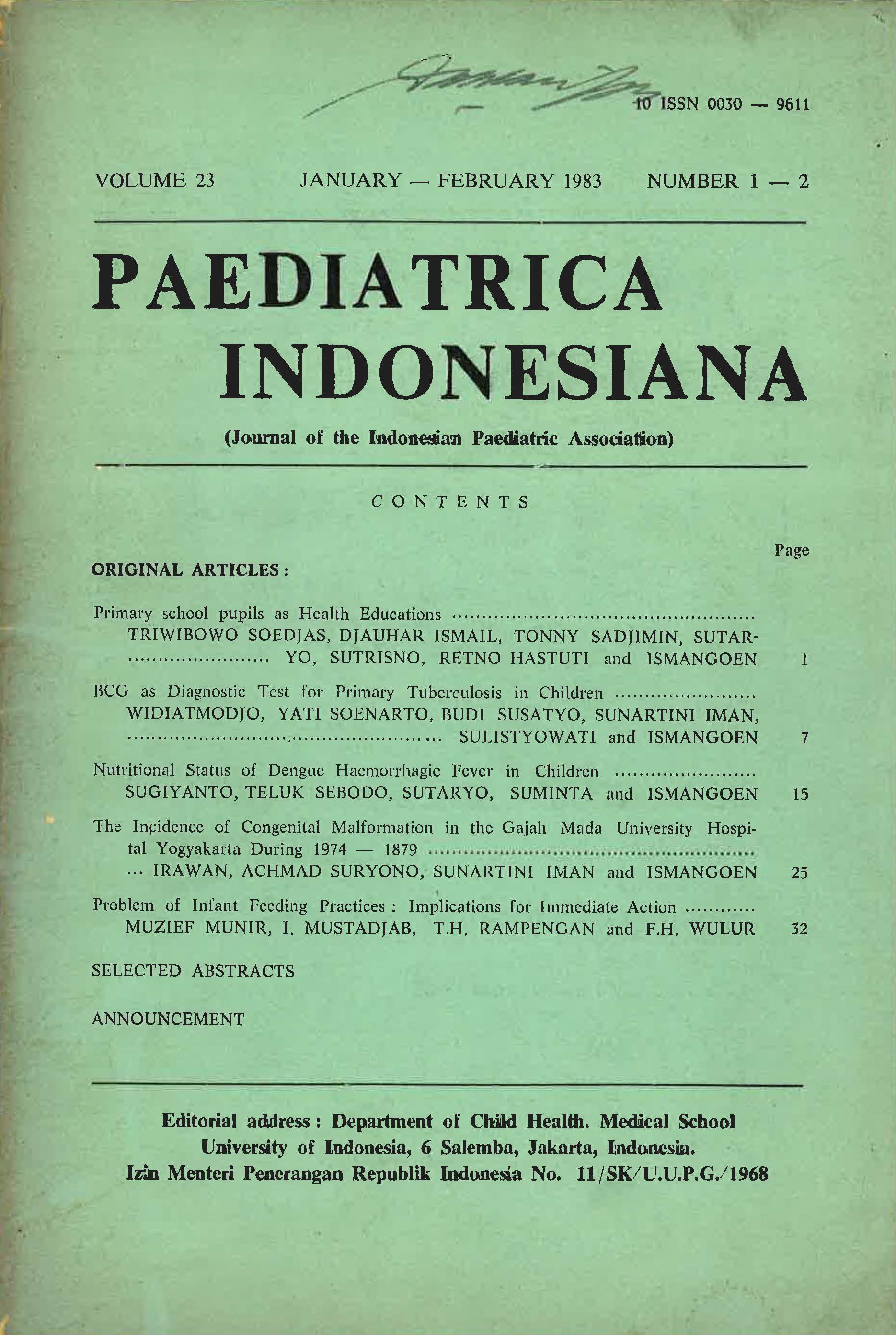Problem of Infant Feeding Practices: Implications for Immediate Action
DOI:
https://doi.org/10.14238/pi23.1-2.1983.32-46Keywords:
infant feeding practice, child health, breastfeedingAbstract
A survey on infant feeding practice and its problems was conducted in an attempt to improve child health, particularly during the first two years of age, during which breast feeding should be the infant's main food.
Allthough breast feeding was a generally accepted norm of infant nutrition durring the first year of age, the majority of infants were not breast fed after one year of age. It was clearly observed that early stopping of breast feeding, particularly during the first six months of age, not only increased the risk of
malnutrition, but also increased the risk of diarrheal diseases, which in turn affected significantly the nutritional status.
Early introduction of supplementary food, particularly around three months of age reduced the risk of malnutrition. Since the practice of breast feeding naturally decreases after six months of age, the improvement of the types and quality of supplementary food is important indeed, to maintain the beneficial effects of breast feeding.
References
2. GOLDMAN, A.S.; SMITH, C.W. : Host Resistance Factors in Human Milk. J. Pediatr. 82 : 1082 (1973).
3. HANSON, L.A.; CARLSON, B.; AHLSTED, S.; FALLSTROM, SP. : New Knowledge in Human Milk Immunology. International Congress of Pediatrics, New Delhi, 1977.
4. PARKIN, J.M.: The Child in the African environment. East African Literature Bureau, Nairobi, 1976. (Cited by Morley, D.: Biosocia1 advantages of an adequate birth interval. J. Biosoc. Sci. Suppl. 4 : 69 – 81 (1977).
5. SODERHJELM, L. : Infant feeding hygi ene in Sweden. Acta Ped. Scand. 61 : 565 - 570 (1972).
6. SURJONO, D.; ISMADI, S.D.; SUWARDJI; ROHDE, J.E. : Bacterial contamination and dilution of milk in infant feeding bottles. J. Trop. Ped. 26 : 58 – 61 (1980) .
Downloads
Published
How to Cite
Issue
Section
License
Authors who publish with this journal agree to the following terms:
Authors retain copyright and grant the journal right of first publication with the work simultaneously licensed under a Creative Commons Attribution License that allows others to share the work with an acknowledgement of the work's authorship and initial publication in this journal.
Authors are able to enter into separate, additional contractual arrangements for the non-exclusive distribution of the journal's published version of the work (e.g., post it to an institutional repository or publish it in a book), with an acknowledgement of its initial publication in this journal.


















